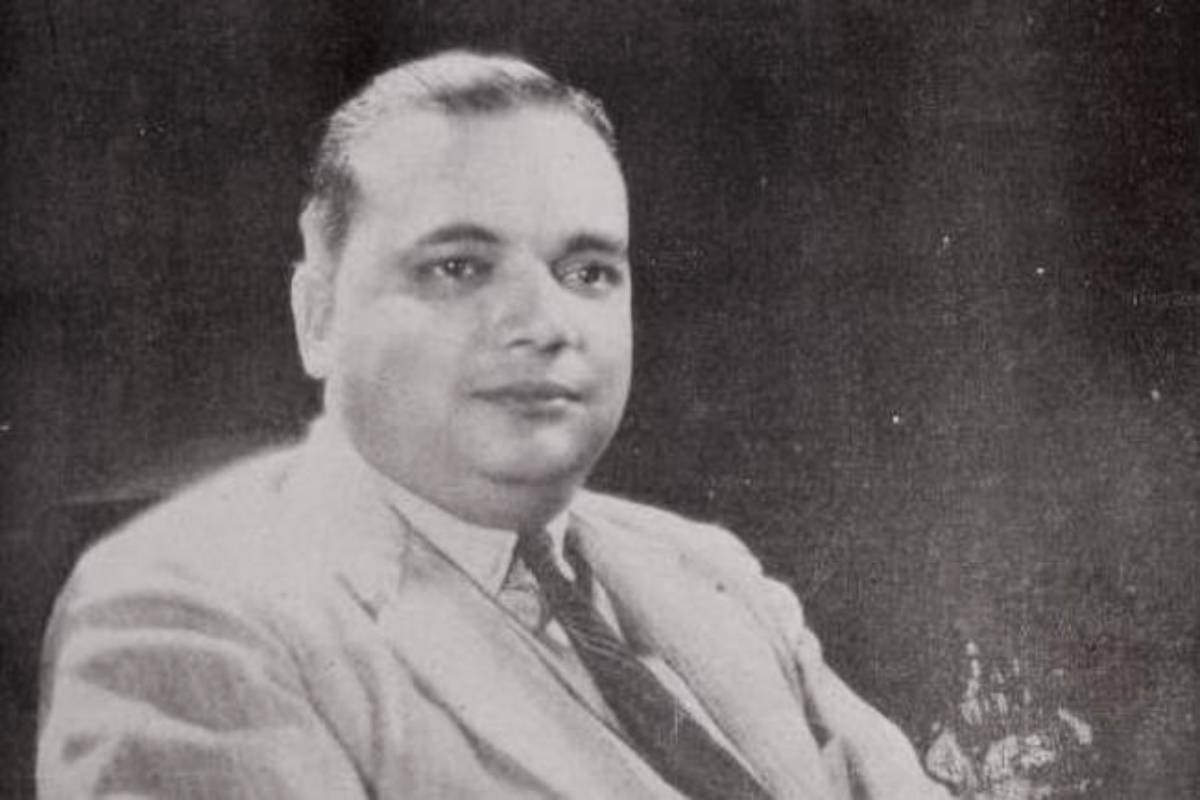Mithun Chakraborty to receive Dadasaheb Phalke Award
Veteran actor Mithun Chakraborty will be honored with the prestigious Dadasaheb Phalke Award for his outstanding contributions to Indian cinema.
He was also associated with the Government of India Film Enquiry Committee in 1949 and honoured with Padmabhushan in 1971 by the Government of India.
Debanjana Banerjee | Kolkata | July 5, 2022 12:00 am

Birth Anniversary of BN Sircar
B N Sircar, a civil engineer from City and Guilds of London, who later turned into a studio owner and film producer, formed the New Theatres in Tollygunge on 10 February 1931 and initiated a new trend in the performing art segment. The motto of his company was “Jivatang Jyotiretu Chhayam” (Light infusing shadows with life).
Finicky about quality, Sircar had the perceptiveness to engage the best of the talents. Actors such as KL Saigal, Pahadi Sanyal, Amar Mullick, Kanan Devi, Chandrabati Devi, Leela Desai and Prithviraj Kapoor were on his payroll.
Advertisement
New Theatres was born spanning a large tract of land off Tollygunge, in the southern extremes of Calcutta. Over the years, it had a lovely garden filled with mango trees, flowers and a “Gol Ghar” in the centre. Sircar attracted directors such as P.C. Barua, Premankor Atharthi, Debaki Bose, Dhiren Ganguly, Bimal Roy and Phani Majumdar under his wings. The first film of New Theatres was a Bengali talkie, Dena Paona, released in 1931, based on the novel by Sarat Chandra Chatterjee. It was directed by Premankur Atarthi and the music was composed by Raichand Boral. B.N. Sircar even invited Rabindranath Tagore to direct a film version of the play, Natir Puja (1932), which was a dance drama with Buddhist themes. The screenplay was written by Dinendranath, Tagore’s nephew. Tagore himself played a key character, Upali, in it.
Advertisement
Late filmmaker Arabindu Mukherjee worked as assistant director at New Theatres from 1947 to 1958. Once he said, “Gol Ghar has an interesting history. The story goes that Sir built it overnight when Rabindranath Tagore was expected to come to the studios for the shooting of his only directorial film, Natir Pooja, in 1931. He knew that Tagore would find the studio floors too hot to handle, so he created this cool corner for the poet laureate which later became his own little island of sunshine.
The Gol Ghar has played host to some of the greatest figures in Indian history. Netaji Subhash Chandra Bose, Pandit Jawaharlal Nehru, Sarvapalli Radhakrishnan, Rabindranath Tagore, Sarat Chandra Chattopadhyay, and Shyamaprasad Mukherjee are just a few names whose footprints have graced the earth that houses New Theatres. From international cinema, personalities like Frank Capra, Jean Renoir and Pudovkin graced the studio with their presence. Sircar also constructed a theatre called Chitra (now called Mitra) as an outlet for films produced by New Theatres.”
B.N. Sircar was born on 5 July, 1901 in Bhagalpur. His father, Sir Nripendra Nath Sircar was the then Advocate General of undivided Bengal, and a member of the Viceroy’s Council. After completing his schooling from Hindu School, Kolkata, he studied Engineering at the University of London. On returning to India he was asked to build a theatre. The project caused him to develop a keen interest in films. He was so fascinated that he proceeded to build a theatre of his own for the screening of Bengali-language films. It was called ‘Chitra’ and was opened in Calcutta by Subhas Chandra Bose on 30 December 1930. It was followed by the construction of New Theatres, which showed Hindi films.
The unique features of the New Theatres were – solid storylines (preferably from Bengali literature), lilting songs and music, sound technique, and good acting. In 1935, playback singing was first used in India in the Bengali film Bhagya Chakra by Nitin Bose. The singers were K C Dey, Parul Ghosh and Suprabha Sarkar. Dhoop Chhaon, Hindi remake of this film, was the first Hindi film to use playback singing.
Over a span of 24 years (1931-1955), the New Theatres produced more than 150 films shot in its own studios, in various languages, which were known for both quality content as well as technical excellence. In August 1940, a massive fire engulfed the New Theatres lab and burned down the years of work. But the adversities failed to bog down Sircar. He quietly put it all together again and succeeded. Puran Bhagat, Yahudi Ki Ladki, Chandidas, Devdas, Dhoop Chaon, Mukti, Vidhyapati, Street Singer, and Badi Didi were the notable Hindi Versions of the bi-linguals which were also made in Bengali. Bakul (1955) was his last film.
Sircar held various responsible positions in several important film bodies set up by the Government as well as the industry. He was also associated with the Government of India Film Enquiry Committee in 1949 and honoured with Padmabhushan in 1971 by the Government of India. Birendra Nath Sircar, was honoured with the Dadasaheb Phalke award in 1971. He died on 28th November 1980. Till date, he remains memorable for his rich contribution to Indian cinema.
Advertisement
Veteran actor Mithun Chakraborty will be honored with the prestigious Dadasaheb Phalke Award for his outstanding contributions to Indian cinema.
Vicky Kaushal earns Dadasaheb Phalke Award for Best Actor (Critics) for his role in 'Sam Bahadur' at DPIFF 2024. Read more about his heartfelt acceptance message.
Shah Rukh Khan clinches the prestigious Best Actor award at the Dadasaheb Phalke International Film Festival 2024, marking a triumphant return to the spotlight.
Advertisement
